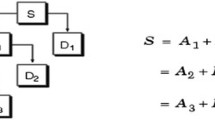Abstract
This paper proposes an unconventional method for removable audible watermarking system based on the requirements of a promising application .Given an audio file, the system makes some part of file available for preview and perceptual watermarking on the remaining portion. The watermark is embedded into selected DCT coefficients of host audio signal so that the signal to noise ratio is maintained at a level which is audibly annoying to human auditory system. An issue that arises here is generating huge number of copies of the audio file which are audibly similar and numerically different. Once the audio file is decoded using the secret key a new watermark is embedded in the audio that is perceptually transparent to the human auditory system. Hence this double watermarking i.e. imperceptible and perceptible watermarking provides a novel prototype for digital right management control. The subjective quality tests and robustness tests indicate that the audio quality is excellent and is robust to signal processing attacks.











Similar content being viewed by others
References
Akhaee MA, Saberian MJ, Feizi S, Marvasti F (2009) “Robust audio data hiding using correlated quantization with histogram-based detector.” IEEE Trans Multimed, (In press)
Bassia P et al (1998) Robust audio watermarking in the time domain. IEEE Trans Multimed 3(2):35–41
Bender W, Gruhl D, Morimoto N (1996) Techniques for data hiding. IBM Syst J 35(3/4):131–336
Boney L, Tewfik A, Hamdy KN (1996) “Digital watermarks for audio signal.” Int Conf Multimed Comput Syst: 473–480
Cui L, Wang S, Sun T (2003) The application of binary image in digital audio watermarking. Neural Netw Signal Process 2:1497–1500
Garcia R (1999) “Digital watermarking of audio signals using a psychoacoustic auditory model and spread spectrum theory”. In AES 107th Convention, pp- 123–31
Hu Y, Kwong S, Huang J (2006) An algorithm for removable visible watermarking. IEEE Trans Circ Syst Video Tech 16(1):129–133
Kang X, Yang R, Huang J (2011) Geometric invariant audio watermarking based on an LCM feature. IEEE Trans Multimed 13(2):181–192
Kennedy MP, Kolumban G (2000) Digital communication using chaos. Signal Process 80:1307–1320
Kirovski D, Malvar H (2001) “Robust spread-spectrum audio watermarking.” IEEE Int Conf Acoust Speech Signal Process: 1345–1348
Lee SK, Sung Ho Y (2000) Digital audio watermarking in the cepstrum domain. IEEE Trans Consum Electron 46(3):245–248
Lin Y, Abdulla WH, Ma Y (2007) “Audio watermarking detection resistant to time and pitch scale modification.” IEEE Int Conf Signal Process Comm: 209–215
Tsai H-H, Cheng J-S, Yu P-T (2003) AudioWatermarking based on HAS and neural networks in DCT domain. EURASIP J Appl Signal Process 3:252–263
Vivekananda Bhat K. Indranil Sengupta and Abhijit Das (2008) “Audio watermarking based on mean quantizationin cepstrum domain”. Int Conf Adv Comput Comm: 73–77
Wang AY, Wu S, Huang J (2010) “Audio watermarking scheme robust against desynchronization based on the dyadic wavelet transform”. EURASIP J Adv Signal Process, Volume (2010), Article ID 232616, pp. 1–17
Xiang Y, Peng D, Natgunanathan I, Zhou W (2011) Effective pseudonoise sequence and decoding function for imperceptibility and robustness enhancement in time-spread echo-based audio watermarking. IEEE Trans Multimed 13(1):2–8
Author information
Authors and Affiliations
Corresponding author
Rights and permissions
About this article
Cite this article
Dutta, M.K., Gupta, P. & Pathak, V.K. A perceptible watermarking algorithm for audio signals. Multimed Tools Appl 73, 691–713 (2014). https://doi.org/10.1007/s11042-011-0945-4
Published:
Issue Date:
DOI: https://doi.org/10.1007/s11042-011-0945-4




